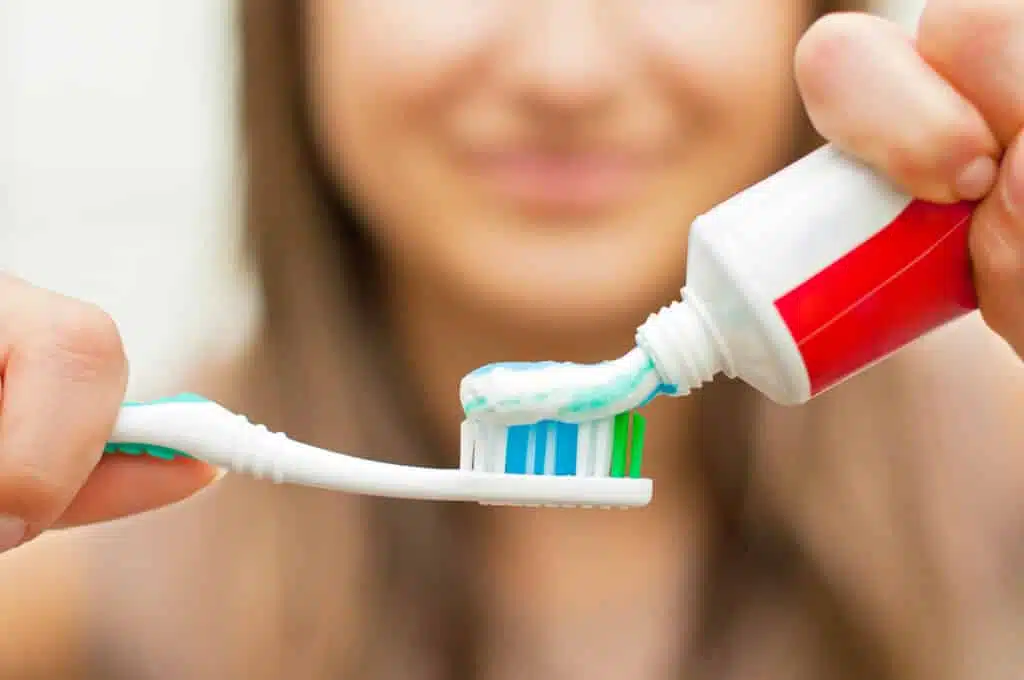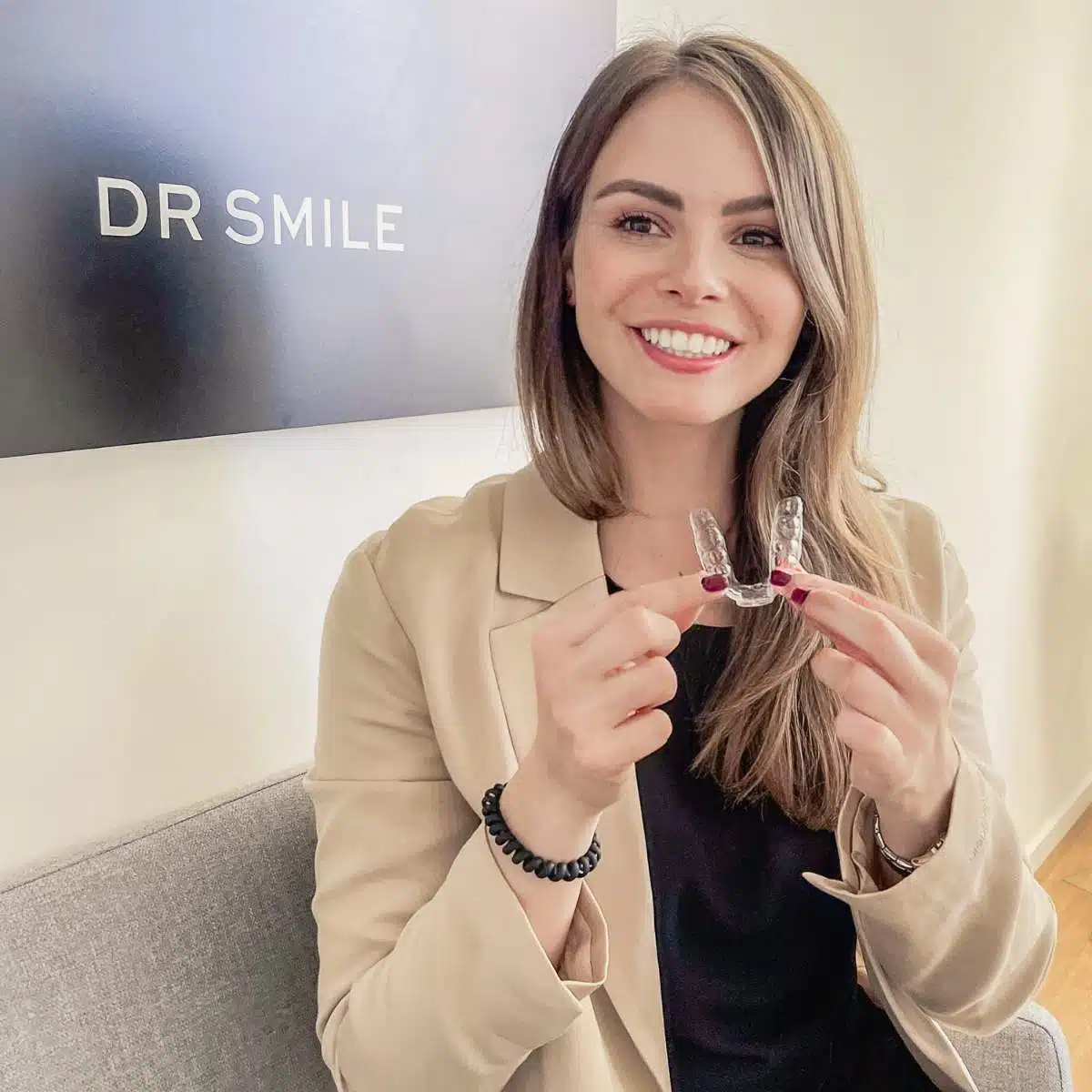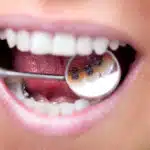Brushing your teeth with braces can feel awkward at first, but it’s usually not a problem. Here you will find tips for ideal oral hygiene.
Are you looking for information about brushing your teeth with braces? Then you’ve come to the right place.
In this article you will learn how to clean your teeth optimally when you wear braces.
This is because good oral hygiene during orthodontic treatment is extremely important to prevent tooth decay, gum disease and other health problems.
| Get 150 € discount on your dental correction! |

Book a consultation appointment now at a nearby DrSmile partner practice and find out if teeth straightening with aligners is right for you.
The appointment is completely non-binding and does not involve any costs.
With the code “THATSMILE150” you will receive 150 € discount on the treatment.
Why is the topic of brushing teeth with braces so important?
Regular and thorough brushing is especially important if you wear braces.
This is because fixed braces consist of various components such as brackets, archwires and elastics. They all create little nooks, crannies and cavities where food debris and plaque can accumulate.
If not thoroughly removed, they can lead to tooth decay, decalcification or even gum disease.

Step by step guide to brushing teeth with braces
Here we have created a detailed step-by-step guide to brushing your teeth with braces for you:
Step 1: Choose the right toothbrush
It is best to use a soft toothbrush with a small brush head. This allows you to clean hard-to-reach areas of the mouth without damaging the braces.
We recommend an electric toothbrush with a rotating or oscillating brush head. It is particularly effective in removing plaque.
Step 2: Rinse out your mouth
Before actually brushing your teeth, it is recommended to rinse your mouth thoroughly with water to remove loose food debris. You can also use a mild mouthwash for this.
Step 3: Clean your braces
It is best to use an interdental brush or dental floss to clean the areas between the wires and around the brackets. This will allow you to remove plaque and food debris that has accumulated there.
Step 4: Brushing teeth
Apply a pea-sized amount of fluoride toothpaste to your toothbrush. Then brush your teeth thoroughly in circular motions, paying special attention to the areas around the brackets and wires.
Do not forget to clean the chewing surfaces and the back of the teeth as well.
Step 5: Rinse
Now rinse your mouth thoroughly with water to remove the remaining toothpaste and food residue.
Step 6: Uses a mouthwash (optional)
An antibacterial mouthwash can provide additional protection by fighting bacteria and keeping your teeth and gums healthy. It is best to ask your dentist or orthodontist for a recommendation for a good product.
| Get 150 € discount on your dental correction! |

Book a consultation appointment now at a nearby DrSmile partner practice and find out if teeth straightening with aligners is right for you.
The appointment is completely non-binding and does not involve any costs.
With the code “THATSMILE150” you will receive 150 € discount on the treatment.
Additional tips for optimal oral hygiene with braces
- Avoid sugary drinks and foods, as they can increase the risk of tooth decay.
- Be sure to keep regular checkup appointments with your orthodontist. This way you can make sure your braces are working properly and any dental problems are detected early.
- Keep your braces clean by cleaning them regularly with a toothbrush.
- Avoid chewing hard or sticky foods as they may damage your braces.
- Take plenty of time to brush your teeth to make sure all areas are thoroughly cleaned.
Aligners are a practical alternative to fixed braces
A practical and hygienic alternative to fixed braces are the so-called aligners.
These are wafer-thin, invisible dental splints that are made to fit precisely and slipped over the teeth.
Treatment with aligners is completely discreet and painless – it usually lasts only a few months. In addition, the invisible braces are often cheaper to have.
A key advantage of aligners is also that they are removed for eating and for daily oral hygiene. The retainers are also removable and invisible.
In this way, it is much easier to keep teeth and gums clean and healthy during the course of the tooth correction.
Treatment with aligners is suitable for mild to moderate malocclusions. A recommended provider of invisible braces is DrSmile, for example.
You can find out whether invisible braces are an option in your case during a free, no-obligation consultation appointment, which you can book here.
Conclusion on brushing teeth with braces
Good oral hygiene is extremely important while you are wearing your braces. This is the only way to prevent tooth decay, gum disease and other problems.
By brushing your teeth regularly and thoroughly and using interdental brushes and dental floss, you can keep your teeth and braces clean without any problems.
Be sure to keep regular follow-up appointments with your orthodontist to make sure treatment is going according to plan.
With these tips, you can ensure optimal oral hygiene during your orthodontic treatment – without fear – and keep your bright smile well into old age.
| Get 150 € discount on your dental correction! |

Book a consultation appointment now at a nearby DrSmile partner practice and find out if teeth straightening with aligners is right for you.
The appointment is completely non-binding and does not involve any costs.
With the code “THATSMILE150” you will receive 150 € discount on the treatment.
FAQs on brushing teeth with braces
Here we answer some frequently asked questions about brushing your teeth with braces.
How often should you brush your teeth with fixed braces?
As without fixed braces, you should brush your teeth thoroughly at least twice a day and also clean the braces thoroughly. However, it would be even better to brush after every meal – at least rinse your mouth thoroughly with mouthwash.
How long should you brush your teeth with braces?
Ideally, brushing should be done after every meal, but at least twice a day. It is best to allow 10 to 15 minutes for this.
What happens if you don’t brush your teeth properly with braces?
With braces, food debris can get stuck particularly quickly between the teeth and on the wires and corners of the brace. The result can be plaque, caries and other dental diseases.



Leave a Reply